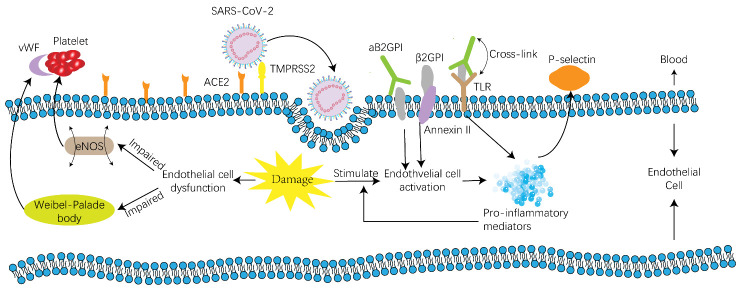Figure 2.
Mechanism of thrombosis on a cellular level. Endothelial dysfunction is the result of endothelial injury and will lead to clot formation because of platelet adhesion caused by vWF released from Weibel-Palade bodies and impaired eNOS. Endothelial cell activation can be induced by aβ2GPI, which belongs to aPLs. The upregulation of proinflammatory mediators and adhesion molecules on endothelial cells will occur after activation. Proinflammatory mediators can form a cytokine storm and contribute to a positive feedback loop in endothelial cell activation, leading to a hypercoagulation status and thrombosis. Adhesion molecules also attract platelets and play a role in thrombosis formation. Abbreviations: ACE2, angiotensin-converting enzyme 2; TMPRSS2, transmembrane protease serine type 2; eNOS, endothelial nitric oxide synthase; aβ2GPI, anti-β2-glycoprotein I antibodies, aPLs, antiphospholipid antibodies; TLR, Toll-like receptor; PSGL-1, P-selectin glycoprotein ligand-1; TF, tissue factor.

